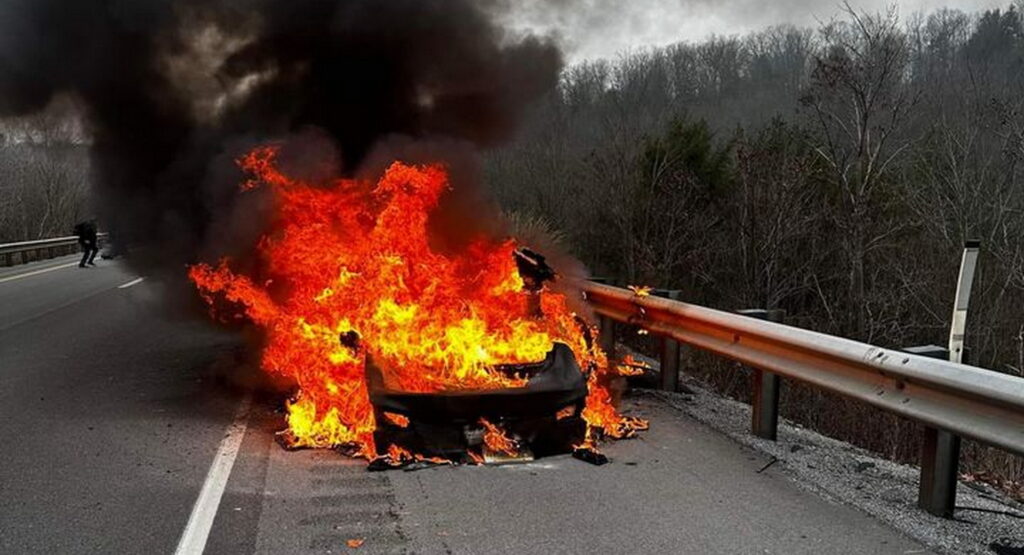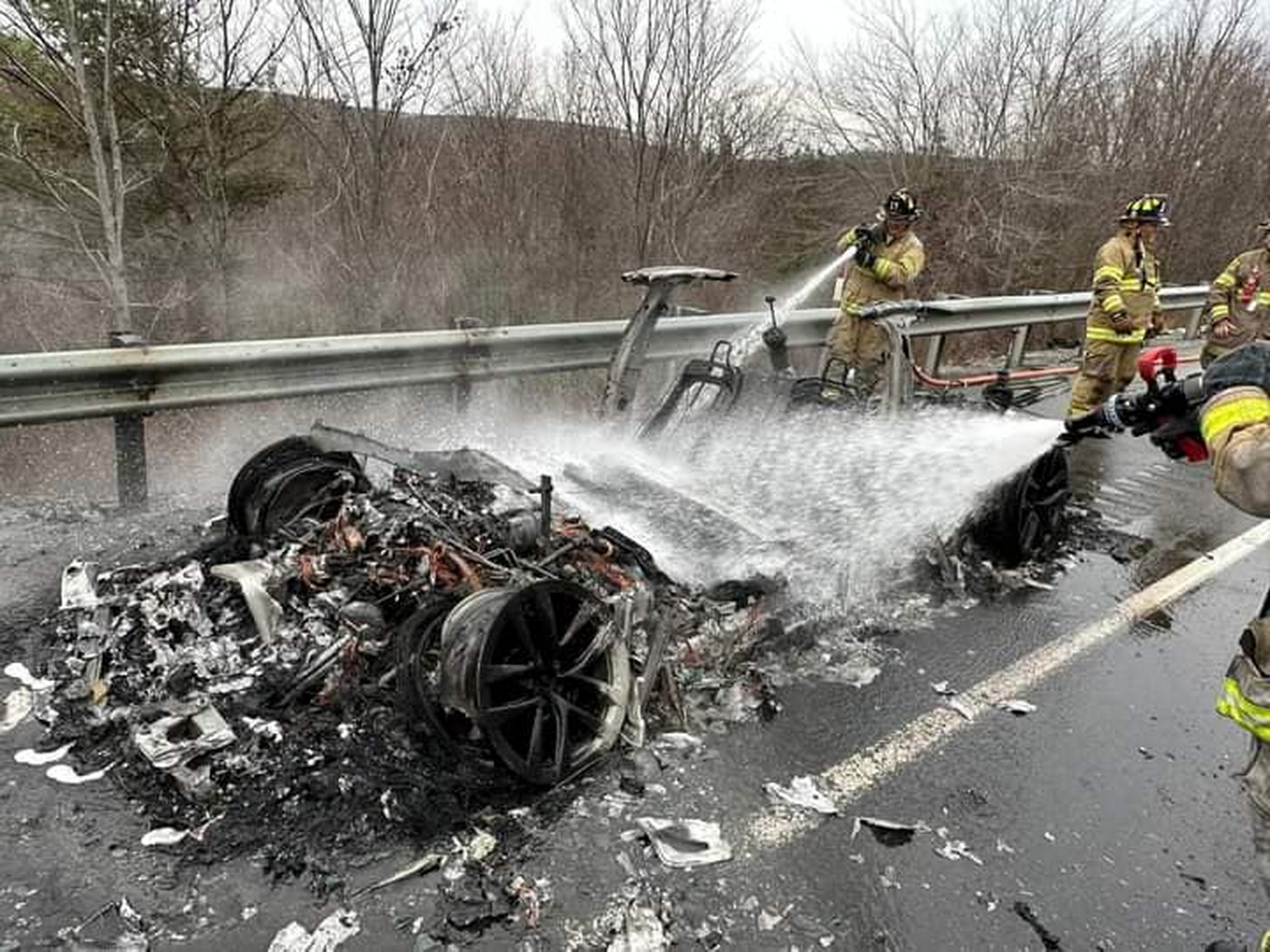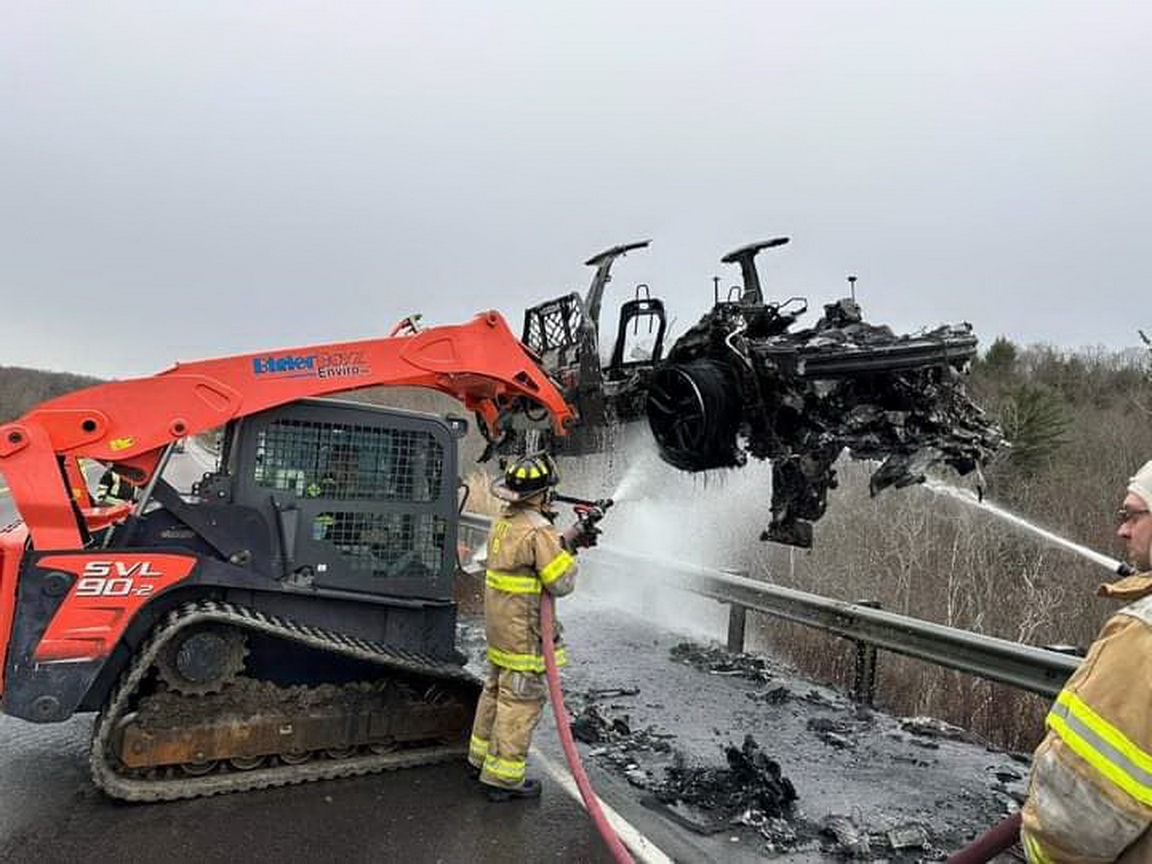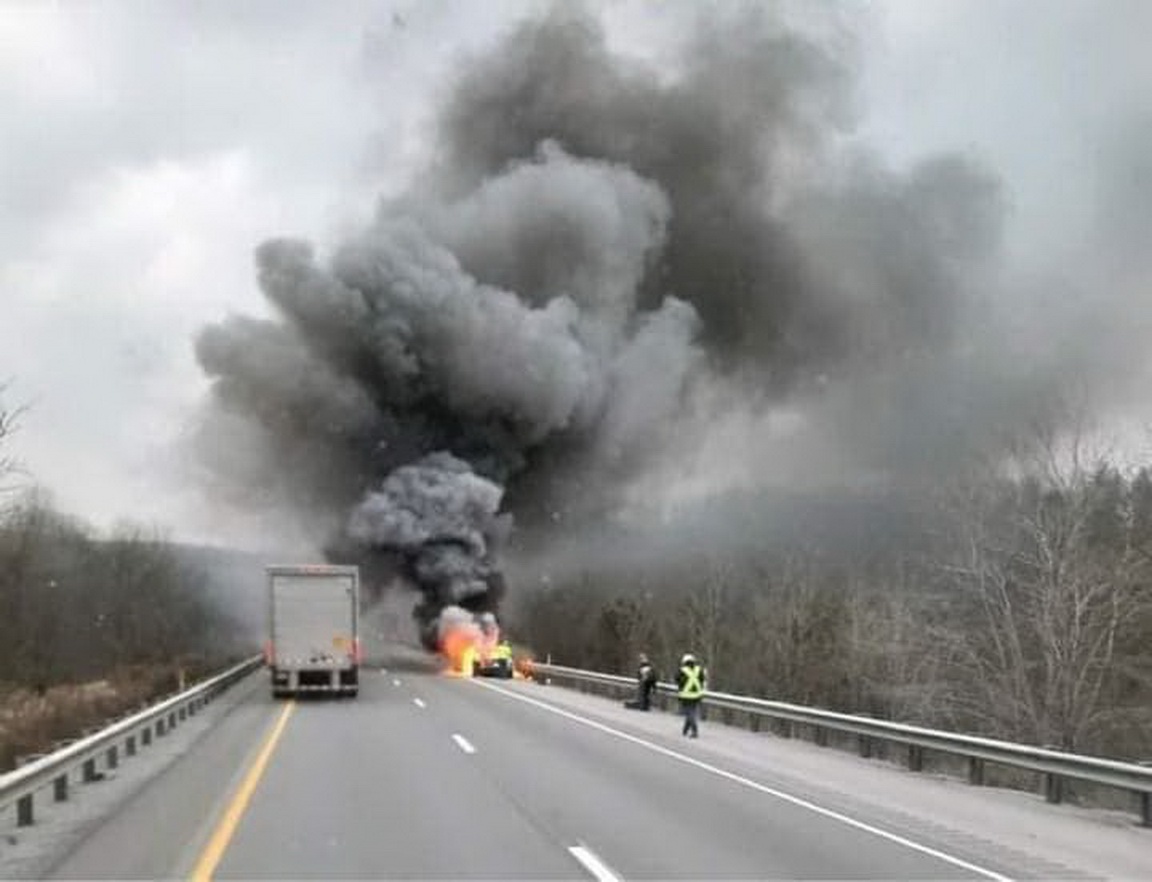Just before 11:00 a.m. on the morning of Tuesday, November 15, the Morris Township Volunteer Fire Company #1 responded to a call on Interstate 80, in central Pennsylvania. It was only several hours and thousands of gallons of water later that the Tesla that started the fire could finally be moved off the road safely.
Fortunately, no one was injured in the incident, which started when the Tesla Model S, which had just been brought home the preceding Monday, according to WTAJ, hit a piece of debris on the road.
According to one of the occupants, after the object hit the underside of the Model S, smoke began emanating from the vehicle. The driver quickly pulled over and all three occupants, and their dog, got out of the car safely.
Read: A Tesla Caught On Fire Three Weeks After Sitting At A Wrecking Yard
They were lucky to do so, though, as the Model S promptly caught fire, eventually burning down to the wheels. According to the Morris Township fire company, its two tankers quickly put 4,000 gallons (15,141 liters) of water on the car, but found that was insufficient to quell the blaze.
Additional tankers were called from three other fire departments and a total of 12,000 gallons (45,425 liters) of water were required to put out the fire. That’s considerably more than a normal car fire, which can take as little as 500 gallons (1,893 liters) to put out, according to the fire department.
“Due to the lithium-ion battery on the vehicle, extinguishing this fire would require additional tankers as the vehicle would continue to reignite and burn fierce at times,” the Morris Township Volunteer Fire Company wrote on Facebook. “In total, it took crews nearly two hours of continually applying water on the vehicle as the battery would begin to reignite and hold high temperatures.”
Teslas aren’t alone among electric vehicles in requiring extra effort to put out if they catch fire. Lithium-ion batteries can go into something called thermal runaway, leading to a fire that takes an enormous amount of effort to put out. Research has shown, though, that electric vehicles are less likely to be involved in fire-related incidents than internal-combustion or hybrid vehicles.











